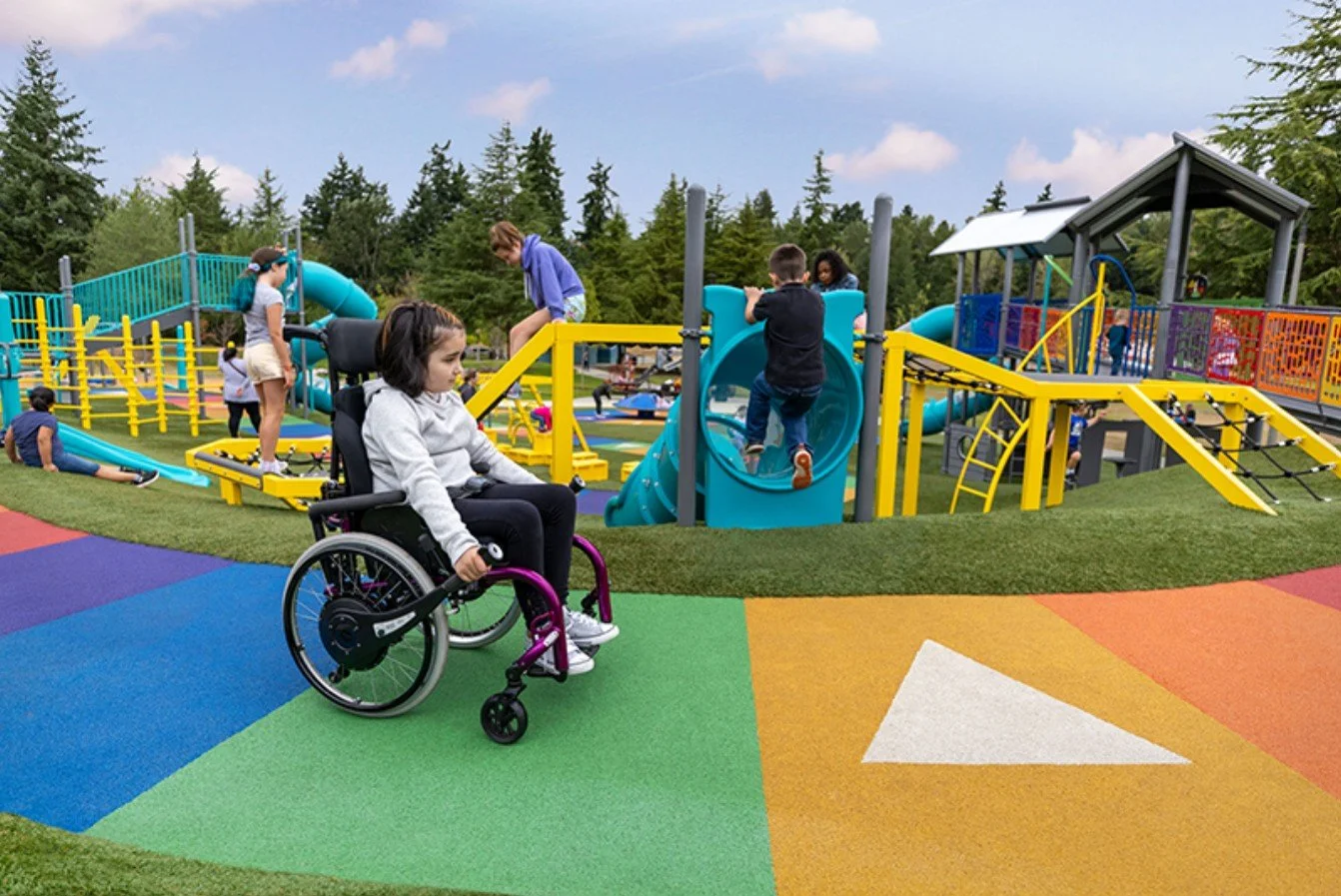Unlocking Potential: How Types of Play Support Child Development in Adaptive Playgrounds
Introduction
As parents and caregivers, we want to see our children thrive and grow. One of the most effective ways to support their development is through play. But did you know that there are different types of play, each contributing uniquely to a child's growth? Let's explore some of the different types of play and how adaptive playgrounds can facilitate them.
An accessible playground demonstrates the variety of children’s welcome.
Understanding the Types of Play
1. Physical Play
Physical play involves activities that engage a child's body and help develop motor skills. This can include climbing, running, jumping, and throwing. On an adaptive playground, you might see:
Accessible swings for children with mobility challenges
Low-to-the-ground play structures for easy access
These features allow all children to engage in physical play, promoting strength, coordination, and spatial awareness.
2. Socio-Dramatic Play
In socio-dramatic play, children take on roles and act out scenarios. This type of play is crucial for developing social skills, empathy, and creativity. An adaptive playground can support this by offering:
Themed play areas (e.g., a pretend store or spaceship)
Role-play props suitable for various abilities
Adaptive playgrounds can support socio-dramatic play by providing diverse play structures and props that accommodate children of all abilities, allowing them to engage in imaginative scenarios together
3. Imaginative play
Imaginative play, also known as pretend or fantasy play, is a cornerstone of childhood development. In this type of play, children create and act out scenarios, often taking on different roles and personas. An adaptive playground can provide the perfect backdrop for imaginative adventures:
Themed play areas (e.g., a pretend store or treehouse)
Sensory panels with different textures and sounds to inspire storytelling
These elements encourage children of all abilities to engage in imaginative play together, fostering social interaction and understanding.
4. Rough-and-Tumble Play
Rough-and-tumble play involves physical contact and can sometimes be mistaken for aggression, but it's a highly valuable form of play. This type of play helps children develop gross motor skills, coordination, and spatial awareness while teaching them about boundaries and self-control:
Soft, impact-absorbing surfaces for tumbling and wrestling
Climbing structures with multiple access points for children of different abilities
This type of play helps children develop gross motor skills, coordination, and spatial awareness while teaching them about boundaries and self-control
5. Exploratory Play
Exploratory or investigative play involves learning about new materials through sensory experiences. This type of play is essential for cognitive development and understanding the world around us. Adaptive playgrounds can support exploratory play by incorporating:
Sensory panels with different textures and sounds
Musical instruments designed for various physical abilities
These elements allow children to engage their senses and explore their environment safely and comfortably.
Importance of Inclusive Play
Adaptive playgrounds are designed to accommodate children of all abilities, allowing them to play side by side. This integration is crucial for several reasons:
Social Development: When children of different abilities play together, they learn to appreciate diversity and develop empathy.
Physical Development: Adaptive equipment allows children with physical challenges to engage in activities that support their motor development.
Cognitive Growth: Inclusive play environments offer varied sensory experiences, promoting cognitive development for all children.
Emotional Well-being: The ability to play freely and interact with peers boosts self-esteem and confidence in children of all abilities.
Creating an Inclusive Play Environment
When designing or choosing an adaptive playground, consider the following:
Accessibility: Ensure that pathways are wide enough for wheelchairs and that there are ramps to access play structures.
Sensory Elements: Incorporate various textures, sounds, and visual stimuli to engage children with sensory processing differences.
Quiet Spaces: Provide areas where children can retreat if they feel overwhelmed.
Adaptive Equipment: Include swings, slides, and climbing structures that can be used by children with various physical abilities.
Conclusion
Play is a universal language that all children understand. By creating adaptive playgrounds that support various types of play, we can ensure that every child has the opportunity to learn, grow, and most importantly, have fun. These environments support physical and cognitive development as well as a sense of community and acceptance among children of all abilities.
Remember, every child deserves the chance to play, explore, and develop to their full potential. By understanding the types of play and how they contribute to child development, we can create spaces that truly support and nurture all children. Let's work together to make every playground an inclusive one, where the laughter and joy of play know no bounds.
If you would like to donate to the Cindy Miles Adaptive Fund, head to our donate page.

